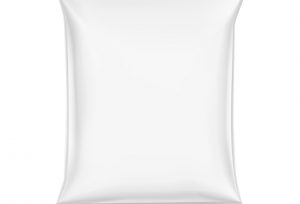In today’s supply chain, convenience comes at a cost. One of the most significant changes in consumer behavior in the last decade is how products are purchased and received. Mass, affordable shipping changed everything, as did a significant increase in in-store products made possible via new packaging techniques — but not without some unintended consequences.
Traditional packaging is, in many ways, wasteful. Depending on the materials used, the net impact on landfills and our global ecology has been dramatically negative.
For those reasons, packaging has long been considered an environmental enemy. With recent innovation, the top global minds are working diligently to reduce the footprint of packaging on waste. By taking smarter, forward-thinking actions, manufacturers and consumers can put a serio us dent in the environmental impact of packaging. Below we’ll cover some of the sustainable packaging trends in 2021.
us dent in the environmental impact of packaging. Below we’ll cover some of the sustainable packaging trends in 2021.
What’s Being Done on the Production Side?
When it comes to sustainable food packaging trends, manufacturers and distributors have gone to great lengths to improve shipping practices, reduce material usage, and meet customer demand for environmentally-conscious solutions.
Here are some practices likely to gain traction in 2021:
1. Materials: Since its inception, plastic packaging has had the perception of being an unbeatable option. It’s easy to work with and produce, and is convenient for consumers. However, renewable and environmentally-friendly packaging options are on the rise. Plant- and paper-based packaging are seeing a resurgence as consumers become more mindful of their environmental impact. Companies like Amazon are quickly moving to fully recyclable products like their paper-padded mailers, dramatically reducing their waste footprint.
2. Design: We’ve all held products that are mostly suitable for recycling. Think of a cardboard container with embedded plastic. It’s a convenient design, but doesn’t make recycling easy. Manufacturers are becoming more resourceful with their packaging designs so that consumers can easily recycle without overthinking it. Thin-film plastics and other embedded components that prevent ease of recycling are being eliminated.
3. Reusability: Single-use plastics have long been the scourge of the environment. Their effects can readily be seen in our oceans with degradation into microplastics quickly posing a threat to the quality of marine life in seafood. Manufacturers are trending toward packaging that can have multiple lives in an effort to curb this quickly. Some companies have even embraced returnable packaging.
4. Labels: Substrates for labels pose a challenge; they’re adhered to the package, they have printed ink on them, and generally are composed of multi-layered composites. Through the development of new label and print technologies, we will soon begin to see wider-spread adoption of eco-friendly labels on all sorts of packaging both in e-commerce and brick-and-mortar.
What About the Customers?
The most powerful tool customers have is choice. By engaging with products that use less waste, we can signal to manufacturers that we agree with movement towards packaging alternatives. Here are some suggestions for eliminating packaging waste through your personal buying habits:
1. Buy local: Close to home means less shipping, fuel and materials.
2. Buy seasonal: By taking note of when certain food products are in season in your area, you can limit the waste associated with cross-country shipping.
3. Buy bulk: For products less susceptible to shelf life, but in larger quantities. Individually wrapped items account for a lot of packaging waste, not to mention the increased shipping.
4. Buy knowledgeably: Do some research to better understand which products are resource-intensive, meaning that production is harmful or even negates any benefits of sustainable packaging. Focus on shelf life of the products you buy to avoid buying too much upfront or purchasing what otherwise could be bought in bulk.
Why PacMoore Is Your Source for Sustainable Packaging
At PacMoore, we are consistently looking for ways in which we can optimize our packaging use and reduce our footprint around waste in this world. As a leading contract manufacturing company, we bring years of insight and are able to get ahead of most environmental trends.
Contact us today to learn more about how we’re bringing sustainable options to every level of the food supply chain and find out what we can do for you.